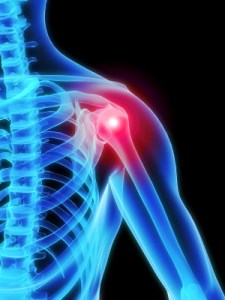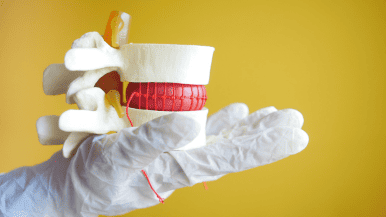 The shoulder is the most flexible joint in the body and it allows you to rotate your arm in front, above and to the side and behind your body. The shoulder’s flexibility can also be its biggest weakness, making it susceptible to instability and injury.
The shoulder is the most flexible joint in the body and it allows you to rotate your arm in front, above and to the side and behind your body. The shoulder’s flexibility can also be its biggest weakness, making it susceptible to instability and injury.
When a shoulder injury occurs, is is usually treated with rest, ice, compression and elevation (RICE). Sometimes, you may need to see an orthopaedic specialist if your pain persists. Your orthopaedic specialist may recommend physical therapy and other conservative measures. When these nonoperative measures fail to alleviate pain, shoulder surgery may be necessary and you shouldn’t shrug it off.
What can cause shoulder injury?
The shoulder joint is a “ball and socket.” It is composed of the clavicle (collarbone), the scapula (shoulder blade) and the humerus (upper arm bone). It is held in place with muscles, tendons and ligaments.
Injury can occur to any part of the shoulder causing pain, swelling and loss of mobility or range of motion. Some of the most common injuries include:
- Bursitis or tendinitis – this can occur with overuse from activities such as swimming or tennis. These repetitive motions rub or squeeze the rotator cuff.
- Tendon tears – this can occur as a result of injury or degenerative changes such as aging, long-term overuse and wear and tear. Tears can partially or completely split the tendon in two pieces. Rotator cuff and bicep tendon tears are the most common.
- Impingement – this can occur when the top of the shoulder blade puts pressure on the underlying soft tissues when the arm is lifted. This can lead to bursitis, tendinitis and a rotator cuff tear.
- Instability – this occurs when the head of the upper arm bone is forced out of the shoulder socket and can happen as a result of a sudden injury or overuse. It can lead to partial or total dislocation of the shoulder.
- Fracture – this occurs when a bone becomes broken.
- Arthritis – injury and shoulder pain can be a result of arthritis. While there are many types of arthritis, the most common occurring arthritis in the shoulder is osteoarthritis, known as “wear and tear” arthritis.
What nonsurgical treatments exist for shoulder injuries.
Depending on the injury the shoulder has sustained, your orthopaedic specialist may recommend nonsurgical treatments first. These treatments can involve resting the shoulder and altering activities to avoid doing anything that worsens shoulder pain. Sometimes, completing physical therapy can alleviate pain from a shoulder injury, increase shoulder strength and improve range of motion. Your orthopaedic specialist may also include prescribed medication to reduce inflammation and pain in the shoulder.
When should I consider shoulder surgery?
When pain persists despite these non-surgical treatments don’t work surgery may be recommended by your shoulder specialist. In the case of recurring dislocations and rotator cuff tears, your shoulder specialist will likely suggest surgery without recommending non-surgical treatments. When determining if shoulder surgery is right for you, your shoulder specialist will consider your medical history; the swelling, tenderness, range of motion, strength or instability of the shoulder; and diagnostic tests such as X-rays, MRIs or CT scans.
Why shouldn’t I shrug off shoulder surgery?
While you may want to postpone surgery, it can lead to future damage of the shoulder joint. In some situations, delaying the surgical repair of the shoulder can increase the chances that a problem will be more difficult to treat later on.
Postponing surgery can cause a patient to decrease the amount they use their shoulder. This can cause muscle atrophy from lack of use and make post-surgical rehabilitation more challenging. Postponing surgery can also lead to excessive glenoid bone loss making it harder for the surgeon to resurface the socket side of the joint.
What types of shoulder surgeries are available?
Depending on the type of injury that has occurred in the shoulder will determine which surgery your shoulder specialist recommends. There are two common types of shoulder surgery — arthroscopy and shoulder replacement surgery.
Arthroscopy allows the surgeon to insert a small medical device with a lens (arthroscope) into tiny incisions to look inside the joint. The surgeon will then use precision instruments to repair the shoulder through shaving, cutting, grasping, suture passing and knot tying of the joint and ligaments. Because arthroscopy uses smaller incisions, it may result in less pain for patients and shorten the recovery time. Recovery time is usually about two weeks.
Shoulder replacement surgery can be performed three different ways. These types include:
- Total shoulder replacement involves replacing the joint surfaces with a prosthetic ball attached to a stem and a plastic socket. Recovery time is usually about two to four weeks.
- Stemmed Hemiarthroplasty involves only replacing the ball of the shoulder.
- Resurfacing hemiarthroplasty involves replacing the joint.



